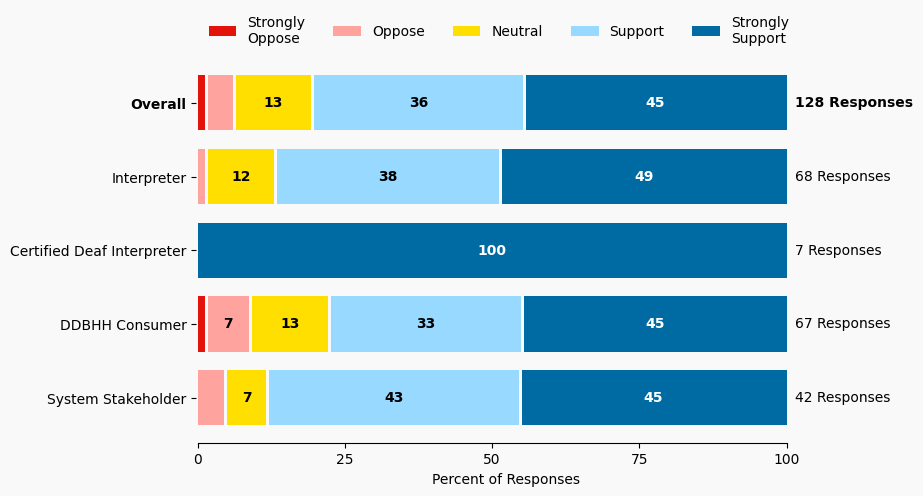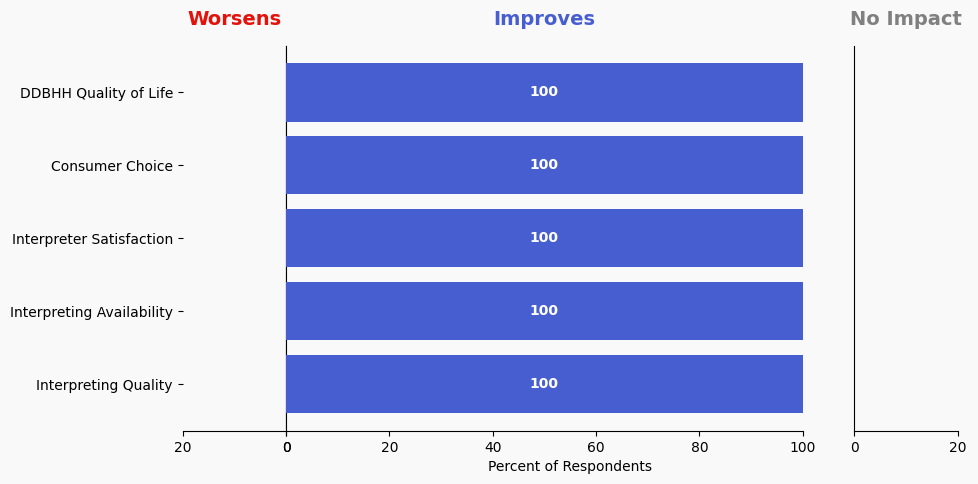46 Promote K12 Educational Certified Deaf Interpreters
Issue: Some DDBHH students require interpreting skills that can only be provided by Certified Deaf Interpreters (CDIs). Currently, there are challenges with school districts hiring CDIs despite legislation in place to provide for CDIs in classrooms and the funding reimbursement to school districts for CDI services.
Proposed Solution: The Commission partner with the Department of Children, Youth and Families and the Minnesota Department of Education 1) to explore the challenges and benefits for implementation and 2) to develop an outreach plan to educate school districts and families on the benefits for CDIs for some DDBHH students in K12 settings. Include exposure/education for DDBHH students annually and empowering youth for self-determination of such services within their IEPs.
Expected outcome: Greater awareness and choice for better educational outcomes for Minnesota’s DDBHH youth and their families. Learning opportunities for hearing interpreters working with CDIs in educational settings.
Who is impacted: DDBHH children in mainstream educational settings, CDIs
Timeline: 6 months

Summary of Support Image Description
The stacked bar charts show how respondents rated their level of support and the total number of responses. The percentage for the five support levels is shown from left to right: Strongly Oppose (Dark Red), Oppose (Light Red), Neutral (Yellow), Support (Light Blue), and Strongly Support (Dark Blue).
Respondents may identify with multiple subgroups. The overall level of support is:
Overall
Strongly Oppose: 2%
Oppose: 5%
Neutral: 13%
Support: 36%
Strongly Support: 45%
Click to see the detailed image description for each subgroup.
Interpreter
Strongly Oppose: 0%
Oppose: 1%
Neutral: 12%
Support: 38%
Strongly Support: 49%
Certified Deaf Interpreter
Strongly Oppose: 0%
Oppose: 0%
Neutral: 0%
Support: 0%
Strongly Support: 100%
DDBHH Consumer
Strongly Oppose: 1%
Oppose: 7%
Neutral: 13%
Support: 33%
Strongly Support: 45%
System Stakeholder
Strongly Oppose: 0%
Oppose: 5%
Neutral: 7%
Support: 43%
Strongly Support: 45%
Overview of Respondents Opting for In-Depth Solution Analysis
After indicating their support level, 4% of the 128 respondents opted in to further assess whether the solution would worsen or improve on five metrics. Of the opt-in reviewers (6 respondents), 100% supported the solution, 0% were neutral on the solution, and 0% opposed the solution.
The remaining 122 respondents did not opt in to further assess the solution. Of these people, 79% support the solution, 13% were neutral on the solution, and 6% opposed the solution.
Reviewer Evaluation of Solution Effectiveness

Solution Effectiveness Image Description
The stacked bar charts show how respondents assessed the effectiveness of this solution based on five metrics. For each metric, the percentage of respondents is shown from left to right: Worsens (Red), Improves (Blue), No Impact (Gray).
DDBHH Quality of Life
Makes It Worse 0%
Makes It Better 100%
No Impact 0%
Interpreter Satisfaction
Makes It Worse 0%
Makes It Better 100%
No Impact 0%
Consumer Choice
Makes It Worse 0%
Makes It Better 100%
No Impact 0%
Interpreting Availability
Makes It Worse 0%
Makes It Better 100%
No Impact 0%
Interpreting Quality
Makes It Worse 0%
Makes It Better 100%
No Impact 0%
Reviewer Feedback and Insights
Interpreter
Comments from Interpreters highlight the lack of awareness among DDBHH youth about requesting or needing a CDI, and uncertainty about who should advocate for them. One comment suggests greater involvement of educational interpreters and addressing potential challenges in teaming with CDIs in the classroom.
Deaf, DeafBlind, Hard of Hearing
Comments from DDBHH Consumers mention that NAIE is working on an educational interpreter certification, expected to be available in two years. Comments express the need for multi-tier pressures on educational settings to overcome systemic barriers for DDBHH students.
System Stakeholder
Comments from System stakeholders emphasize the need for applying social and administrative pressure on educational institutions to either provide CDIs or change their educational approach for DDBHH students by creating more accessible environments.
PREVIOUS SOLUTION
Issue: Currently, MJB does not have consistent practice of honoring requests from hearing interpreters (who are contacted first for assignments) to request CDI teams. Some coordinators say that only the DDBHH constituent or the judge is permitted to request a CDI. This is problematic because often judges and DDBHH consumers are not aware that a CDI is an option nor how it might benefit the accuracy of the proceedings. DDBHH constituents are not getting CDIs consistently when they may need a CDI for effective communication.
NEXT SOLUTION
Issue: There are insufficient best practices regularly used for CDI and CHI team settings
Leave a Reply